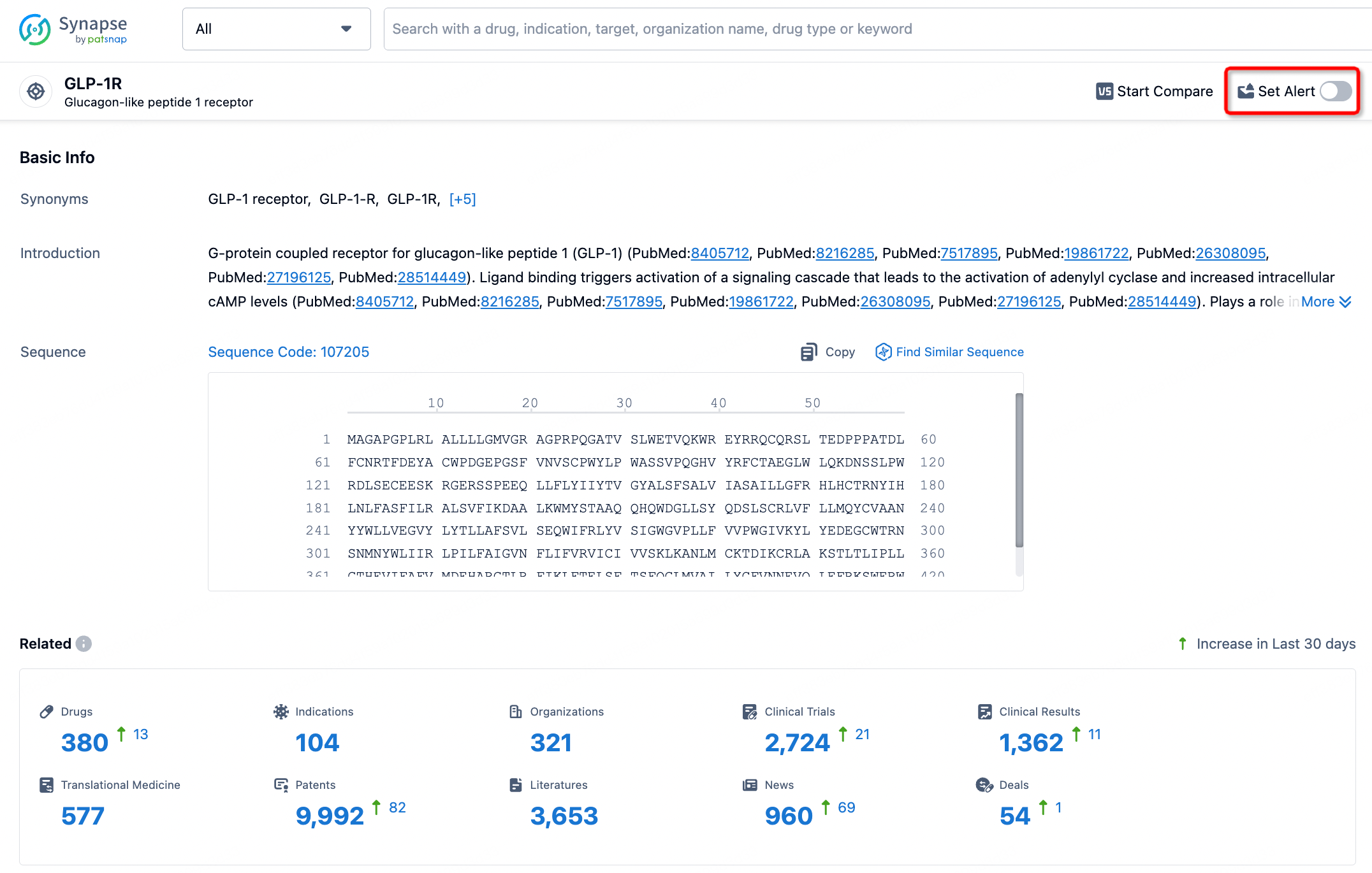Request Demo
What are SQSTM1 inhibitors and how do they work?
21 June 2024
Introduction to SQSTM1 Inhibitors
SQSTM1 inhibitors represent a promising avenue in the field of medical research, especially in the context of diseases characterized by protein aggregation and inflammation. SQSTM1, also known as p62, is a multifunctional adaptor protein that plays a critical role in various cellular processes, including autophagy, oxidative stress response, and inflammation. Its involvement in these pathways makes it an attractive target for therapeutic intervention in a range of pathological conditions. By modulating the activity of SQSTM1, researchers hope to mitigate the detrimental effects of its dysregulation, paving the way for novel treatments for several chronic and acute diseases.
How do SQSTM1 Inhibitors Work?
To understand how SQSTM1 inhibitors work, it’s essential to grasp the fundamental role of SQSTM1/p62 in the cell. SQSTM1 is known for its ability to bind ubiquitinated proteins, marking them for degradation via the autophagy-lysosome pathway. This protein serves as a bridge between ubiquitinated cargo and autophagosomes, facilitating the clearance of damaged or misfolded proteins. When SQSTM1 is overexpressed or mutated, it can lead to the accumulation of protein aggregates, which are associated with various neurodegenerative diseases, including Alzheimer’s and Parkinson’s.
SQSTM1 inhibitors function by either directly binding to the p62 protein or modulating the signaling pathways in which p62 is involved. By inhibiting the activity of SQSTM1, these compounds can prevent the excessive accumulation of protein aggregates. Additionally, SQSTM1 is involved in the regulation of the NF-κB signaling pathway, which is crucial for inflammatory responses. By inhibiting SQSTM1, it is possible to modulate this pathway and potentially reduce chronic inflammation, which is a common feature of many autoimmune and inflammatory diseases.
What are SQSTM1 Inhibitors Used For?
The potential applications of SQSTM1 inhibitors are vast, given the protein's involvement in multiple cellular processes and disease pathways. Here are some of the key areas where SQSTM1 inhibitors show promise:
1. **Neurodegenerative Diseases**: One of the primary applications of SQSTM1 inhibitors is in the treatment of neurodegenerative diseases such as Alzheimer’s, Parkinson’s, and Huntington’s disease. These conditions are characterized by the accumulation of misfolded and aggregated proteins in the brain. By inhibiting SQSTM1, researchers aim to enhance the autophagic degradation of these toxic protein aggregates, potentially slowing disease progression and alleviating symptoms.
2. **Cancer**: SQSTM1 plays a role in the regulation of cell survival and apoptosis, making it a potential target in cancer therapy. Some cancers exhibit elevated levels of SQSTM1, which can contribute to tumor growth and resistance to chemotherapy. Inhibitors of SQSTM1 may help to sensitize cancer cells to treatment and promote cell death, offering a new strategy for combating tumors.
3. **Inflammatory and Autoimmune Diseases**: Chronic inflammation is a hallmark of many autoimmune and inflammatory diseases, such as rheumatoid arthritis and inflammatory bowel disease. SQSTM1 is a key player in the NF-κB signaling pathway, which regulates the expression of pro-inflammatory cytokines. By inhibiting SQSTM1, it may be possible to dampen the inflammatory response and provide relief from the symptoms of these conditions.
4. **Metabolic Disorders**: Recent research suggests that SQSTM1 may also be involved in metabolic regulation. Aberrant SQSTM1 activity has been linked to conditions such as obesity and type 2 diabetes. Inhibitors of SQSTM1 could potentially modulate metabolic pathways and improve insulin sensitivity, offering a novel approach to managing metabolic disorders.
In conclusion, SQSTM1 inhibitors hold significant potential across a broad spectrum of diseases, particularly those involving protein aggregation, cancer, and chronic inflammation. Ongoing research continues to uncover the intricate roles of SQSTM1 in cellular homeostasis and disease, bringing us closer to the development of effective SQSTM1-targeted therapies. As our understanding of this protein deepens, the therapeutic applications of its inhibitors are likely to expand, offering hope for patients with currently intractable conditions.
SQSTM1 inhibitors represent a promising avenue in the field of medical research, especially in the context of diseases characterized by protein aggregation and inflammation. SQSTM1, also known as p62, is a multifunctional adaptor protein that plays a critical role in various cellular processes, including autophagy, oxidative stress response, and inflammation. Its involvement in these pathways makes it an attractive target for therapeutic intervention in a range of pathological conditions. By modulating the activity of SQSTM1, researchers hope to mitigate the detrimental effects of its dysregulation, paving the way for novel treatments for several chronic and acute diseases.
How do SQSTM1 Inhibitors Work?
To understand how SQSTM1 inhibitors work, it’s essential to grasp the fundamental role of SQSTM1/p62 in the cell. SQSTM1 is known for its ability to bind ubiquitinated proteins, marking them for degradation via the autophagy-lysosome pathway. This protein serves as a bridge between ubiquitinated cargo and autophagosomes, facilitating the clearance of damaged or misfolded proteins. When SQSTM1 is overexpressed or mutated, it can lead to the accumulation of protein aggregates, which are associated with various neurodegenerative diseases, including Alzheimer’s and Parkinson’s.
SQSTM1 inhibitors function by either directly binding to the p62 protein or modulating the signaling pathways in which p62 is involved. By inhibiting the activity of SQSTM1, these compounds can prevent the excessive accumulation of protein aggregates. Additionally, SQSTM1 is involved in the regulation of the NF-κB signaling pathway, which is crucial for inflammatory responses. By inhibiting SQSTM1, it is possible to modulate this pathway and potentially reduce chronic inflammation, which is a common feature of many autoimmune and inflammatory diseases.
What are SQSTM1 Inhibitors Used For?
The potential applications of SQSTM1 inhibitors are vast, given the protein's involvement in multiple cellular processes and disease pathways. Here are some of the key areas where SQSTM1 inhibitors show promise:
1. **Neurodegenerative Diseases**: One of the primary applications of SQSTM1 inhibitors is in the treatment of neurodegenerative diseases such as Alzheimer’s, Parkinson’s, and Huntington’s disease. These conditions are characterized by the accumulation of misfolded and aggregated proteins in the brain. By inhibiting SQSTM1, researchers aim to enhance the autophagic degradation of these toxic protein aggregates, potentially slowing disease progression and alleviating symptoms.
2. **Cancer**: SQSTM1 plays a role in the regulation of cell survival and apoptosis, making it a potential target in cancer therapy. Some cancers exhibit elevated levels of SQSTM1, which can contribute to tumor growth and resistance to chemotherapy. Inhibitors of SQSTM1 may help to sensitize cancer cells to treatment and promote cell death, offering a new strategy for combating tumors.
3. **Inflammatory and Autoimmune Diseases**: Chronic inflammation is a hallmark of many autoimmune and inflammatory diseases, such as rheumatoid arthritis and inflammatory bowel disease. SQSTM1 is a key player in the NF-κB signaling pathway, which regulates the expression of pro-inflammatory cytokines. By inhibiting SQSTM1, it may be possible to dampen the inflammatory response and provide relief from the symptoms of these conditions.
4. **Metabolic Disorders**: Recent research suggests that SQSTM1 may also be involved in metabolic regulation. Aberrant SQSTM1 activity has been linked to conditions such as obesity and type 2 diabetes. Inhibitors of SQSTM1 could potentially modulate metabolic pathways and improve insulin sensitivity, offering a novel approach to managing metabolic disorders.
In conclusion, SQSTM1 inhibitors hold significant potential across a broad spectrum of diseases, particularly those involving protein aggregation, cancer, and chronic inflammation. Ongoing research continues to uncover the intricate roles of SQSTM1 in cellular homeostasis and disease, bringing us closer to the development of effective SQSTM1-targeted therapies. As our understanding of this protein deepens, the therapeutic applications of its inhibitors are likely to expand, offering hope for patients with currently intractable conditions.
How to obtain the latest development progress of all targets?
In the Synapse database, you can stay updated on the latest research and development advances of all targets. This service is accessible anytime and anywhere, with updates available daily or weekly. Use the "Set Alert" function to stay informed. Click on the image below to embark on a brand new journey of drug discovery!
AI Agents Built for Biopharma Breakthroughs
Accelerate discovery. Empower decisions. Transform outcomes.
Get started for free today!
Accelerate Strategic R&D decision making with Synapse, PatSnap’s AI-powered Connected Innovation Intelligence Platform Built for Life Sciences Professionals.
Start your data trial now!
Synapse data is also accessible to external entities via APIs or data packages. Empower better decisions with the latest in pharmaceutical intelligence.


